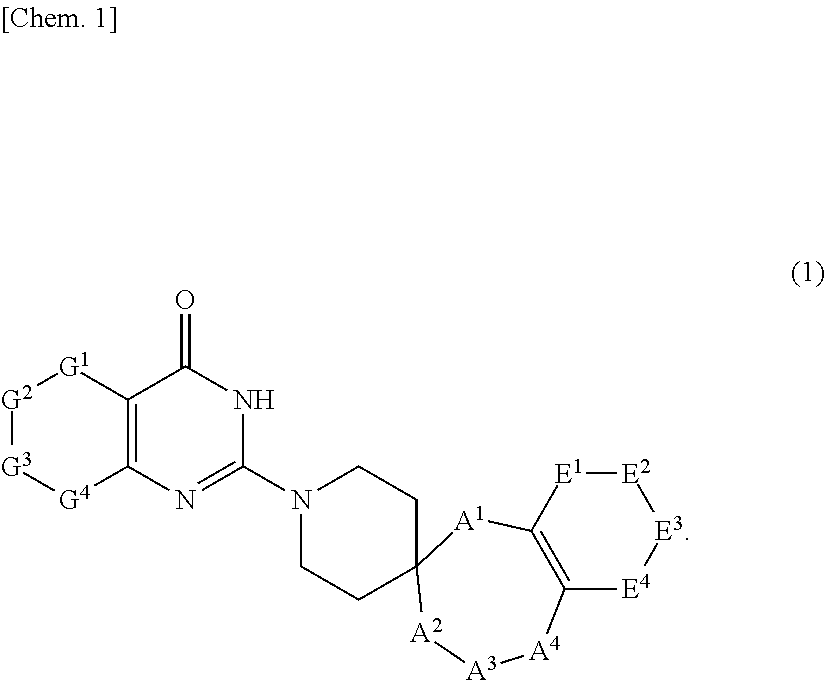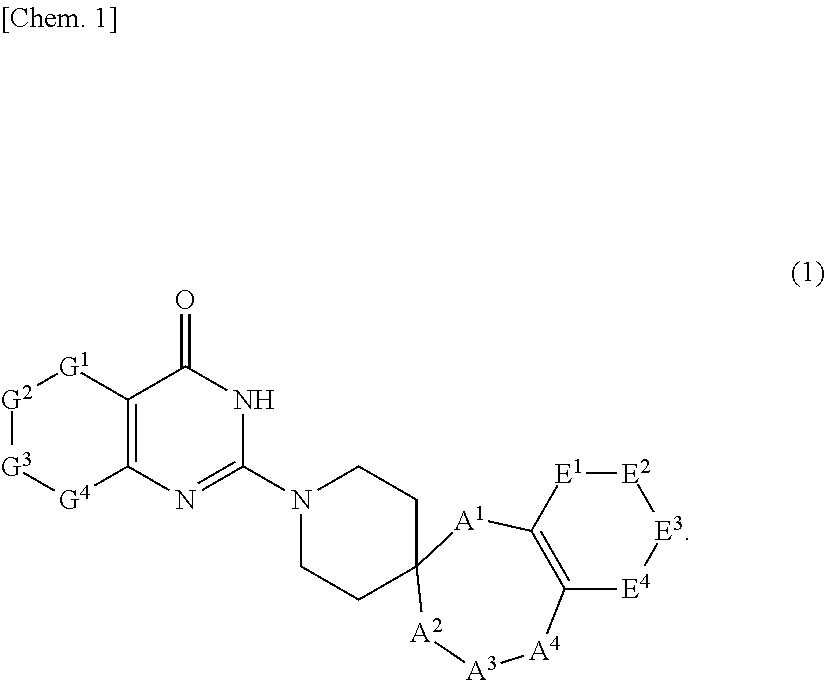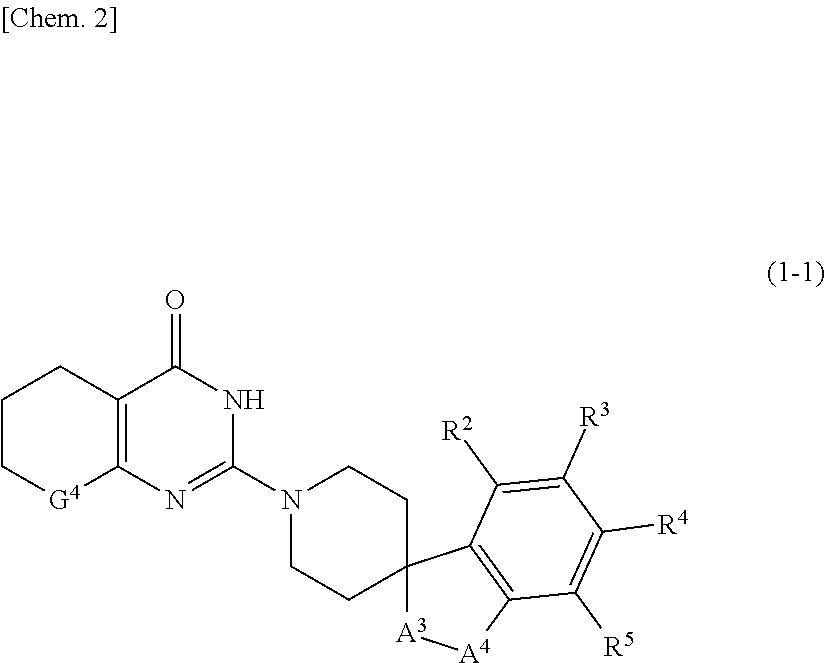Compound or pharmaceutically acceptable salt thereof
a technology of applied in the field of new compound or pharmaceutically acceptable salt thereof, to achieve the effect of excellent tankyrase inhibitory action and useful for treatment and/or prophylaxis of various disorders
- Summary
- Abstract
- Description
- Claims
- Application Information
AI Technical Summary
Benefits of technology
Problems solved by technology
Method used
Image
Examples
reference example 1
2-chloro-8-(trifluoromethyl)quinazolin-4(3H)-one
[0445]
[0446]First, a reaction of 2-amino-3-(trifluoromethyl)benzoic acid (5.0 g) and urea (15 g) proceeded at 200° C. for 8 hours. The obtained reaction mixture wads cooled to 100° C., then water (20 mL) was added thereto, and the precipitate was collected by filtration. The precipitate was dissolved in a 0.5 M sodium hydroxide aqueous solution (150 mL), and unsolved matters were removed by filtration. The resultant solution was acidified with 5 M hydrochloric acid under ice cooling, the precipitate generated was collected by filtration, and the filter cake was washed with water and methanol in sequence, and then was dried under reduced pressure to obtain 8-(trifluoromethyl)quinazoline-2,4(1H,3H)-dione (2.9 g).
[0447]The 8-(trifluoromethyl)quinazoline-2,4(1H,3H)-dione (690 mg) was suspended in phosphorus oxychloride (3.4 mL), followed by addition of N,N-dimethylaniline (1.0 mL) to allow a reaction to proceed at 100° C. for 4 hours. The ...
reference example 2
Methyl 4-oxotetrahydro-2H-thiopyran-3-carboxylate
[0450]
[0451]Dimethyl 3,3′-thiodipropionate (2.15 g) was dissolved in tetrahydrofuran, sodium hydride (0.509 g) was added thereto, and the mixture was stirred under reflux by heating for 1 hour. A saturated ammonium chloride aqueous solution was added to the reaction solution, followed by extraction with chloroform. The organic layer was dried with anhydrous magnesium sulfate and was concentrated under reduced pressure, and the obtained residue was purified by silica gel column chromatography (hexane / ethyl acetate=50 / 50) to obtain the title compound.
[0452]MS(ESI) m / z: 175[M+H]+.
reference example 3
2-chloro-5,6,7,8-tetrahydroquinazolin-4(3H)-one
[0453]
[0454]First, urea (1.2 g) and sodium ethoxide (about 2.88 M ethanol solution) (10.4 mL) were added to a solution of ethyl 2-oxocyclohexane-1-carboxylate (1.7 g) in ethanol (20 mL), and the mixture was refluxed by heating for 3.5 hours. The reaction mixture was diluted with water and was acidified with 5 M hydrochloric acid, and the precipitate generated was collected by filtration, and was dried to obtain 5,6,7,8-tetrahydroquinazoline-2,4(1H,3H)-dione (0.67 g).
[0455]Phosphorus oxychloride (4 mL) was added to the 5,6,7,8-tetrahydroquinazoline-2,4(1H,3H)-dione (0.60 g), and the mixture was stirred at 100° C. for 2.5 hours. The reaction mixture was poured into ice water, and the precipitate generated was collected by filtration and was dried to obtain 2,4-dichloro-5,6,7,8-tetrahydroquinazoline (0.56 g).
[0456]The 2,4-dichloro-5,6,7,8-tetrahydroquinazoline (0.31 g) was suspended in water (5.4 mL), a 5 M sodium hydroxide aqueous solutio...
PUM
 Login to View More
Login to View More Abstract
Description
Claims
Application Information
 Login to View More
Login to View More - R&D
- Intellectual Property
- Life Sciences
- Materials
- Tech Scout
- Unparalleled Data Quality
- Higher Quality Content
- 60% Fewer Hallucinations
Browse by: Latest US Patents, China's latest patents, Technical Efficacy Thesaurus, Application Domain, Technology Topic, Popular Technical Reports.
© 2025 PatSnap. All rights reserved.Legal|Privacy policy|Modern Slavery Act Transparency Statement|Sitemap|About US| Contact US: help@patsnap.com



